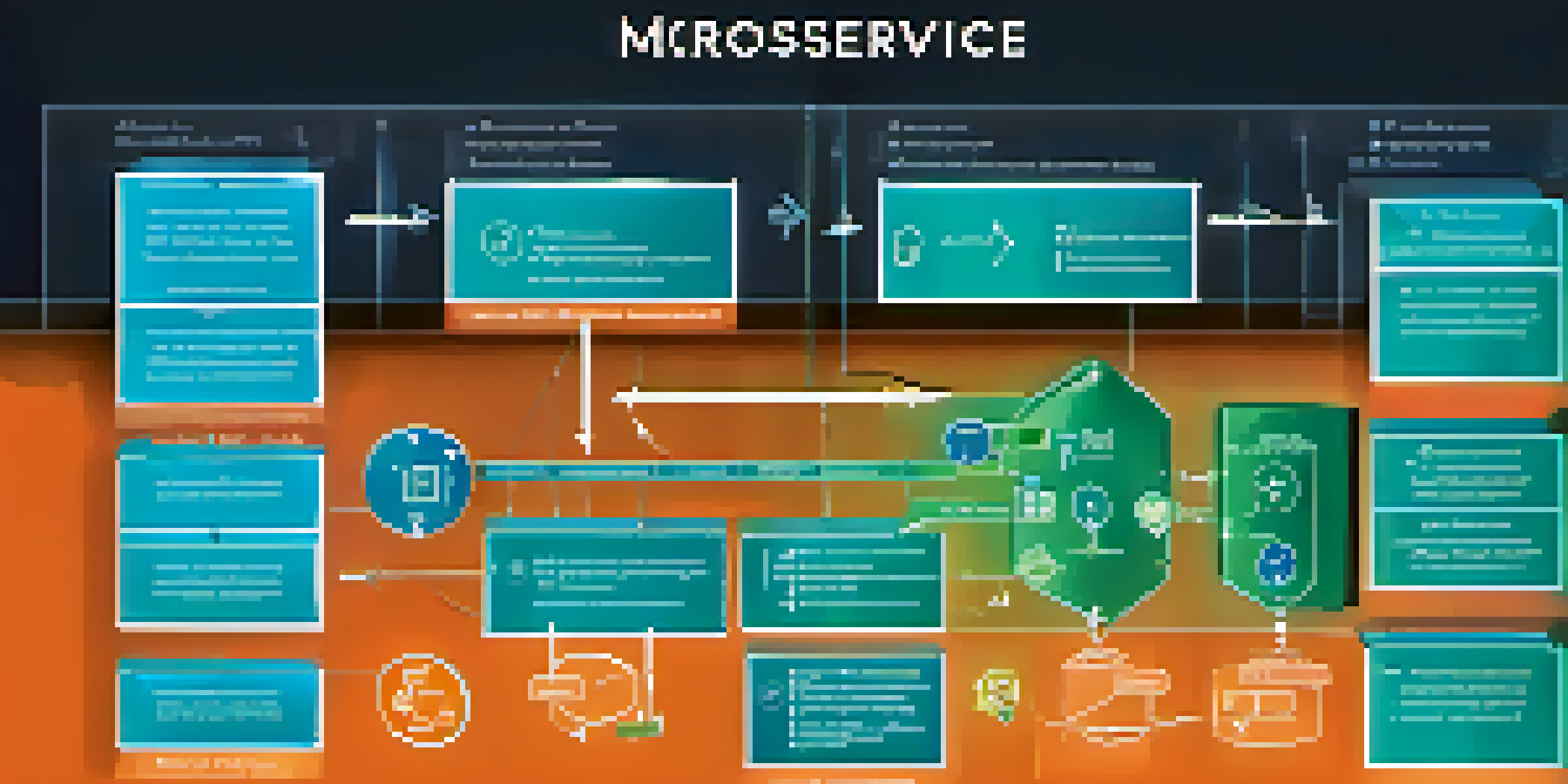Microservices Architecture: Understanding the Circuit Breaker Pattern

What is Microservices Architecture?
Microservices architecture is an approach to software development where applications are structured as a collection of loosely coupled services. Each service is designed to perform a specific business function and can be developed, deployed, and scaled independently. This modularity allows teams to work on different services simultaneously, speeding up development and fostering innovation.
Microservices allow for the rapid development and deployment of applications, enabling teams to iterate quickly and innovate regularly.
The beauty of microservices lies in their ability to communicate over well-defined APIs, which makes it easier to integrate new technologies and tools. This architecture contrasts sharply with monolithic systems, where changes can disrupt the entire application. By breaking down applications into smaller, manageable pieces, businesses can adapt more quickly to changing market demands.
However, with great flexibility comes the challenge of maintaining stability and reliability. As services interact with one another, the risk of failures increases, prompting the need for patterns that help manage these complexities. One such pattern is the Circuit Breaker, which plays a crucial role in ensuring that microservices remain resilient.
Understanding the Circuit Breaker Pattern
The Circuit Breaker Pattern is inspired by electrical circuit breakers, which protect circuits from overloads. In software, this pattern prevents a system from repeatedly trying to execute a failing operation, thereby avoiding further strain on the service. When a particular service fails too many times within a defined period, the circuit breaker 'trips,' and subsequent requests are automatically redirected or rejected, allowing the service time to recover.

This pattern consists of three states: Closed, Open, and Half-Open. In the Closed state, all requests pass through, and if failures exceed a specified threshold, the circuit transitions to the Open state, where requests are blocked. After a timeout period, the circuit enters the Half-Open state, where a limited number of requests are allowed to test if the service has recovered. If successful, the circuit returns to Closed; if not, it goes back to Open.
Microservices Enable Flexibility
Microservices architecture allows applications to be structured as independent services, enhancing development speed and adaptability.
By implementing this pattern, teams can reduce the risk of cascading failures in microservice architectures. It acts as a safety net, allowing for graceful degradation of services instead of total collapse, which is vital for maintaining a positive user experience.
Why Use the Circuit Breaker Pattern?
Using the Circuit Breaker Pattern provides several benefits, particularly in environments characterized by numerous interdependent services. One of the primary advantages is improved system stability; by preventing ongoing requests to a failing service, the pattern helps to isolate issues and reduces the likelihood of service-wide outages. This can be particularly critical during peak traffic times when systems are under stress.
The circuit breaker pattern is a powerful way to manage failures, allowing systems to remain resilient and responsive.
Additionally, the Circuit Breaker Pattern enhances fault tolerance. By allowing services to fail gracefully, it ensures that users can still access other functionalities of the application, even if one part is experiencing issues. This is akin to how a well-designed road network keeps traffic flowing, even if one route is closed for repairs.
Moreover, implementing this pattern can lead to better resource management. By avoiding repeated calls to a failing service, precious server resources are spared, allowing the system to allocate them more efficiently. This can lead to cost savings and improved performance across the board.
Real-World Examples of Circuit Breaker Implementation
Many tech giants have successfully implemented the Circuit Breaker Pattern to enhance their microservices architecture. For instance, Netflix employs this pattern to manage its vast array of services. By using a circuit breaker, Netflix can minimize disruptions in service delivery, ensuring that users experience fewer interruptions when accessing content.
Another example is Amazon, which utilizes circuit breakers to safeguard its microservices from failures during high-demand periods. By temporarily blocking requests to services that are struggling, Amazon ensures that its overall system remains responsive, even as individual components experience issues. This allows them to maintain a seamless shopping experience for customers.
Circuit Breaker Ensures Stability
The Circuit Breaker Pattern helps maintain system reliability by preventing repeated calls to failing services, thus isolating issues.
These examples highlight the effectiveness of the Circuit Breaker Pattern in real-world applications. By adopting this approach, companies can not only keep their services running smoothly but also enhance overall customer satisfaction.
Challenges of Implementing Circuit Breakers
While the Circuit Breaker Pattern offers significant advantages, implementing it is not without its challenges. One major hurdle is determining the appropriate thresholds for failure rates and timeout periods, which can vary significantly depending on the service and its typical load. If these parameters are set too loosely, the circuit may trip unnecessarily, leading to service disruptions; conversely, if they are too strict, it may result in degraded performance.
Another challenge is monitoring and testing the effectiveness of circuit breakers in real-time. This requires robust monitoring systems to track service health and performance metrics continuously. Without accurate data, it can be difficult to adjust the circuit's behavior to meet changing conditions, which can undermine its reliability.
Additionally, teams must ensure they have a clear strategy for handling requests when a circuit is open. This often involves implementing fallback mechanisms, such as default responses or alternative services, which must be carefully designed to maintain user experience. Balancing these elements requires thoughtful planning and collaboration across development teams.
Best Practices for the Circuit Breaker Pattern
To harness the full potential of the Circuit Breaker Pattern, it’s important to follow best practices. Start by defining clear thresholds for success and failure based on historical data and expected workloads. Regularly review these settings to adapt to changing usage patterns and ensure they remain effective over time.
Implement comprehensive logging and monitoring to gain insights into how the circuit breaker is performing. This data can help identify trends, such as frequent failures in specific services, allowing teams to address underlying issues proactively. Visualization tools can also aid in tracking service health and circuit breaker activity.
Best Practices Enhance Performance
Following best practices for circuit breakers, such as defining clear thresholds and implementing fallback strategies, can significantly improve user experience.
Lastly, ensure that fallback strategies are in place for when a circuit is open. These could include returning cached responses, providing alternative data, or displaying user-friendly error messages. A well-thought-out fallback can significantly improve user experience, even when some services are down.
Future of Circuit Breakers in Microservices
As microservices continue to evolve, the Circuit Breaker Pattern will likely play an increasingly critical role in maintaining system resilience. With the rise of cloud-native architectures and serverless computing, the need for robust failure management strategies becomes even more pronounced. Circuit breakers will help safeguard services against unpredictable performance and maintain user satisfaction.
Additionally, advancements in machine learning and artificial intelligence may enhance how circuit breakers are configured and adjusted over time. For example, predictive analytics could inform dynamic threshold adjustments based on real-time traffic patterns, optimizing performance without manual intervention.

Ultimately, as businesses strive for greater agility and scalability in their software architectures, the Circuit Breaker Pattern will remain a key component in achieving these goals. By ensuring that systems can gracefully handle failures, organizations can continue to innovate and provide value to their users.